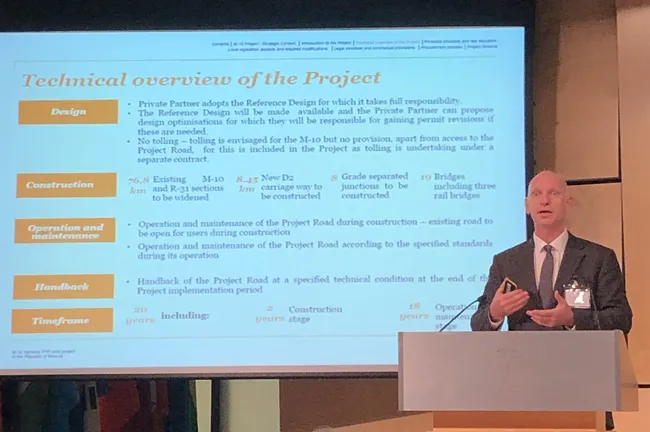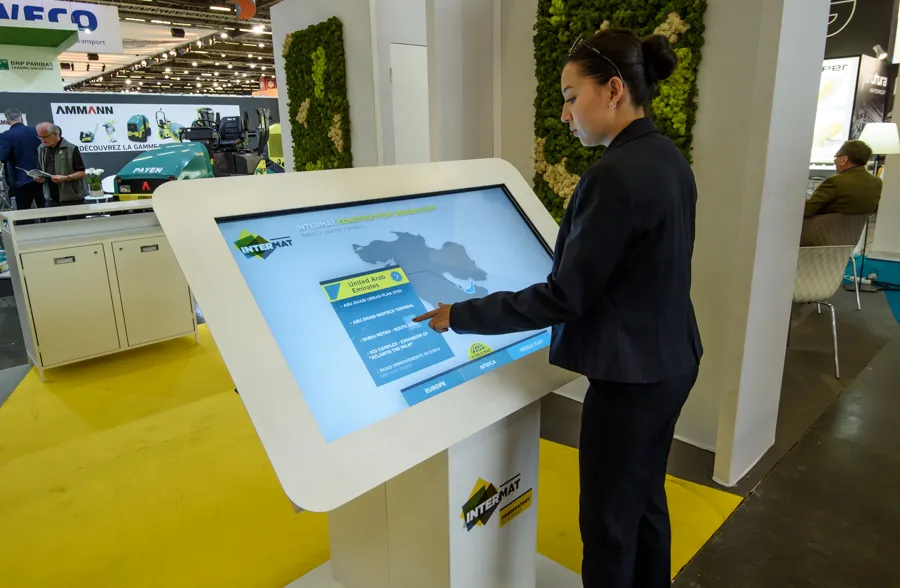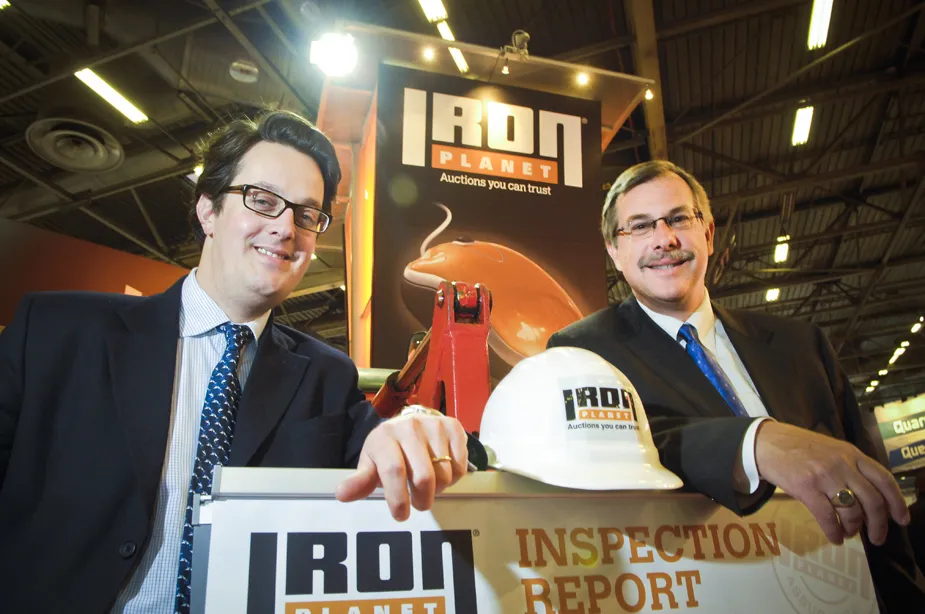
"There’s a little bit of almost everything in this project,” said Steve Gilpin, technical team leader and associate of engineers Ove Arup & Partners International. True to his word, there is.
That was how Gilpin kicked off his presentation about Belarus’s planned M-10 motorway project to 180 international bankers, private investors, contractors and engineering companies. He was one of 12 speakers at the London headquarters of the EBRD –
A week later, Belarus announced pre-qualification to shortlist five major private companies and invite them to tender for what will be a €185.8 million project. The private sector will be responsible for designing, reconstructing, financing and maintenance of five sections of the M10 motorway, a total of 85km. Work is expected to start in the last quarter of 2020.
The project will increase the load per axle from 10tonnes to 11.5tonnes. The speed limit for cars will be raised from 90kph to 120kph and for trucks from 70kph to 100kph, explained Aleksei Avramenko, the transport and communications minister. His ministry will be the state partner in
Belarus’s public-private partnership project.
Avramenko himself was one of the government’s big guns that were rolled out at the EBRD event in London in January. On the one hand it was a roadshow to promote Belarus, on Europe’s eastern extremity, as a safe place to do business overall. On the other hand, it was to announce the upcoming PPP for the M-10 as an example of this safe investment environment.
Other ministers at the EBRD event included the economics minister Dimitry Krutoy; Sergei Kalechits, deputy chairman of the Belarus National Bank; and finance minister Maksim Yermalovich. Also in the line-up was Dennis Turovets, legal adviser to the government and a managing partner in the law firm Egorov Puginsky Afanasiev & Partners.
Construction is expected to take two years followed by an 18-year concession to operate and maintain the structure until 2040. Capital expenditure is likely to be around €185 million. The final deal will probably include currency risk mitigation and an inflation indexation - important in a country that has an inflation rate right now of around 5.5%. Although, as the National Bank deputy chairman said, the government is wrestling to lower it to at least 4% by 2021.
The chosen private partner will take the reference design already completed with the help of Ove Arup and optimise the works, with land use permits being revised as necessary, explained Gilpin. Tolling is not part of the PPP, but if the
government should decide to go down that route, it will be let under a separate contract.
Essentially, the contract is to upgrade and twin the existing M-10, a two-lane asphalt highway. This means stripping off the old asphalt on the existing road and laying down a concrete surface, as will have the new parallel road.
Why concrete and not asphalt? That, says Gilpin, is a political decision based on local and national economies. The government has already invested heavily in concrete plants. Supply of concrete is abundant.
But not many PPPs use concrete because of the initial expense being much greater than that of asphalt. Also, should something go wrong, concrete has higher maintenance and repair costs than asphalt.
However, because the construction and concession deal is for only 20 years, good initial concrete work could pay dividends when giving the structure back to the government, said Gilpin. The concession holder will likely have fewer costs to upgrade and repair the surface in order to meet the agreed acceptable condition for the handover. “With an 18-year concession, there should still be lots of life left in the asset when it is handed back,” he said.
There will be five sections of construction, with some connecting work to local roads at either end of the highway. Capital cost for the project should remain low and also low risk because the terrain is flat. There are no real geographical obstacles to overcome that haven’t already been tackled by the existing highway during its construction.
The existing road has a very low embankment so there will be little earth disturbance during construction of the parallel road. The old road, too, has been surveyed and found to have a stable base meaning it should be straightforward to mill the old pavement and repave with concrete, he said. Recycling of old concrete depends on the availability of recycling plants in the vicinity.
Gilpin estimates there to be 19 bridges but they cross relatively shallow and narrow rivers. The longest bridge will be around 120m with most structures being only 50m. There are also two maintenance depots that can be upgraded, at the private partners expense, or taken down and completely rebuilt.
As an availability contract, the old M-10 must be kept open or at least passable during construction. The M-10 is a strategic truck route across Belarus. It is even more important now Ukraine, to the south, has become a higher-risk transport region thanks to its dispute with Russia over the latter's annexation of what was Ukraine's Crimea region. More traffic is using the Belarus M-10 to avoid Ukraine.
Even so, average annual daily traffic is not high. It is predicted to be just under 9,000 vehicles in 2020 and rise to around only 16,500 by 2040 when the asset is handed over to the government.
The route will have no service areas and only one rest area, essentially a picnic park. Service areas are already provided by private companies operating off the highway.
From an environmental perspective, the route has been given “a clean bill of health”, said Gilpin. This includes any radioactive contamination following the 1986 Chernobyl nuclear power station meltdown in Ukraine, just across Belarus’s southern border. There is no danger to people working on any part of the project.
However, the government, to reassure investors, has noted that two areas in particular – Rechitsa and Kalinkovichy – were in the potential radioactive fallout zone. Because of this, “the disposal of waste and the reuse of site-won material [such as] asphalt from the existing highway shall require checks for potential contamination. The finding of any contamination would be a compensating event”.
Turovets, the government’s legal adviser, noted that the final winner will probably be the one with the lowest availability payment offer. He pointed out that the project is a low-risk contract because land acquisition should not a problem and much technical work of the project already done.
The issue for Belarus is to create a good example of how a PPP can work in the country and then roll out more such private investment opportunities, not just in highways, but other infrastructure sectors, including healthcare and education.








